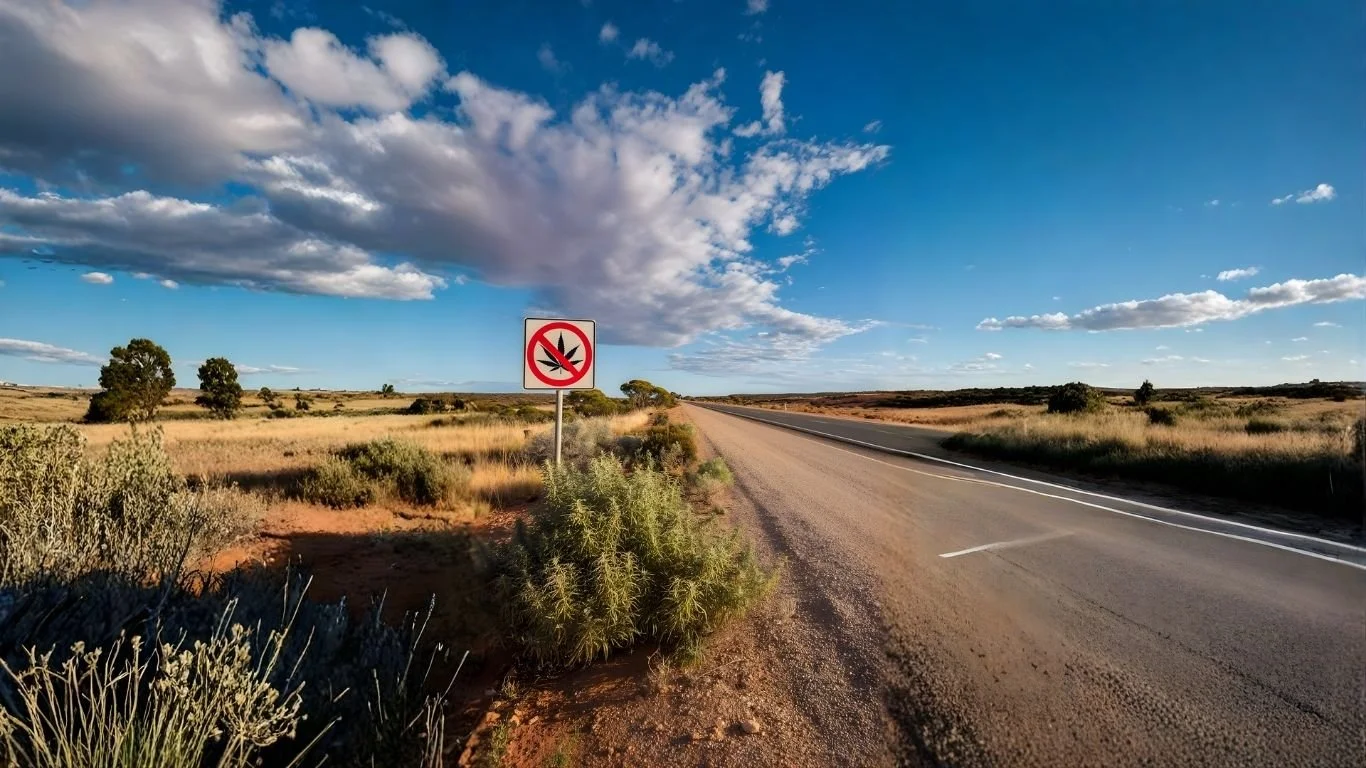Pain, Pot, and the Limits of the Law in Rural Australia.
NSW Rethink Its Ban on Driving After Medicinal Cannabis Use…
Michael James lives on the margins: geographically, medically, legally. His home lies on the edge of Young, a small agricultural town about four hours from Sydney. There’s no public transport to speak of, no buses, no trains. Cabs are prohibitively expensive. And yet, this remote veteran of the Australian Army is effectively barred from driving: not because he’s done anything dangerous, but because he treats his chronic pain with cannabis.
“This is what I get given monthly,” James says, opening a small container of ground cannabis and a vial of oil. He doses each night. The treatment tastes unpleasant, he says. “But it works.”
And so he is caught. The medication that makes daily life bearable also makes him, in the eyes of the law, unfit to drive. In New South Wales, driving with any detectable level of THC in your system is illegal, even if that THC comes from legally prescribed medical cannabis. THC can remain in one’s system for days after its effects have worn off. And so James, and thousands like him, are left in an impossible situation.
“If I take my medication, I’m guilty,” he says. “Even if I’m sober.”
The Letter of the Law
A few months ago, James was pulled over and tested by police. He hadn’t taken his medication in over 12 hours. He felt clear. The test was positive, a result that, under current law, is grounds for criminal liability, regardless of impairment.
He’s not alone. In recent years, the use of medicinal cannabis has increased significantly in Australia, especially among veterans and patients with chronic illnesses. But the legal framework has lagged behind, and the rules governing drug driving remain largely unchanged.
Last year, the New South Wales government convened a drug summit to address some of the tension between medical necessity and public safety. A key recommendation was that unimpaired drivers who are legally prescribed cannabis should be permitted to drive. That proposal has yet to be acted upon.
“It should be treated like every other prescription drug,” one advocate said. “This is about fairness. And about common sense.”
The Numbers and the Noise
The data is a tangle. Transport for NSW reports that between 2019 and 2023, about eight percent of all fatal crashes involved drivers who tested positive for THC but no other drugs. But the figures do not indicate whether those drivers were impaired, or even at fault.
Meanwhile, the National Roads and Motorists’ Association (NRMA) continues to back a zero-tolerance policy, citing uncertainty in the science. "We don’t believe we know enough yet,” one spokesperson said.
In a sense, they’re not wrong. The science of cannabis impairment is complex and deeply inconclusive. Danielle McCartney, a researcher at the University of Sydney, studies cannabinoid effects on driving using high-fidelity simulators. Her work suggests that THC concentration, often measured via oral fluid, is a poor proxy for impairment.
"Two people can take the same dose and metabolise it very differently," she said. "One might test clean in a few hours. The other might still be positive much later. So we can't tell patients how long to wait before they drive."
Prescription or Pretext?
Wayne Hall, a longtime cannabis researcher at the University of Queensland, raises an uncomfortable question: if medical cannabis users are allowed to drive while testing positive for THC, could the law be exploited? Could impaired recreational users seek cover behind prescriptions?
“The system makes it easy,” he says. “There’s an incentive for people to obtain medical cannabis cards regardless of their actual use.”
Hall’s concern highlights a clear double standard: prescribed opiates and benzodiazepines heighten the risk of impairment and road crashes, yet they are not included in Roadside Drug Testing programs.
Still, to focus solely on the risk of abuse is to lose sight of people like Michael James, people for whom cannabis is not a loophole, but a lifeline.
“I’m not saying people should take cannabis and jump behind the wheel,” James says. “But I’m not hurting anyone. I’m just trying to get to town.”
His reality is stark. No transport. No affordable cabs. No ability to drive. Just a man in a small town with a government-issued prescription and a criminal record for using it.
“This isn’t just about me,” he says. “It’s thousands of us. We’re not trying to cheat the system. We’re just trying to live.”
In a country known for its vast distances and sparse infrastructure, the road can mean freedom, connection, autonomy. For Michael James, it has become a symbol of something else entirely, the distance between policy and compassion.
Article by Walter Juan


